It was a little after two o’clock in the afternoon on March 11, 2011, when a 9.1-magnitude earthquake shook the northeastern coast of Japan, the biggest earthquake ever recorded with modern techniques in the country. Within an hour, a tsunami reaching as high as forty meters in some areas hit the regions of Miyako, Iwate, and Tōhoku, wiping out and flooding everything on its trip inland. The earthquake, its aftershocks, and the strike of the waves damaged the Fukushima Daiichi nuclear plant, located on the coast of Tōhoku, the province closest to the epicenter of the quake. Three of the plant’s reactors collapsed, the cooling and backup systems went offline, and several explosions and meltdowns in the facilities released to air and sea tons of radioactive materials. With thousands of casualties, millions of yen in destroyed property, and the trauma of rebuilding an already-economically depressed area now exposed to lethal contamination, this tragedy, also referred to as the 3/11 events, has become one of the most significant milestones of twenty-first-century Japan.
The disaster became a cathartic episode that brought to the forefront of public discussion many of the country’s contemporary challenges: the controversial employment of nuclear energy, the economic disparity between rural and urban regions, the inefficiency of institutions to carry a transparent process of checks and balances, and the future of Japan as a collective project for the twenty-first century. Catastrophes create spaces in which societies can look at themselves in the mirror and shape their collective imaginations.1 Tragedies provide the sense of a chance for rebirth and improvement. Cultural and other creative agents have fed political and intellectual discussions addressing the tragedy. Literature, in particular, has taken a remarkable role in this scenario. In the wake of the 3/11 events, many writers felt compelled to write about the process of recovery. They narrate the way Japanese are mourning, coping with the tragedy, and addressing the challenges that the bare soil had exposed out in the open after decades of dwelling below society’s surface. There is a great diversity of literary texts addressing the disaster, from poetry and short fiction to novels and creative essays. We can approach 3/11 literature as a means to understand a society potentially at a turning point of its history.
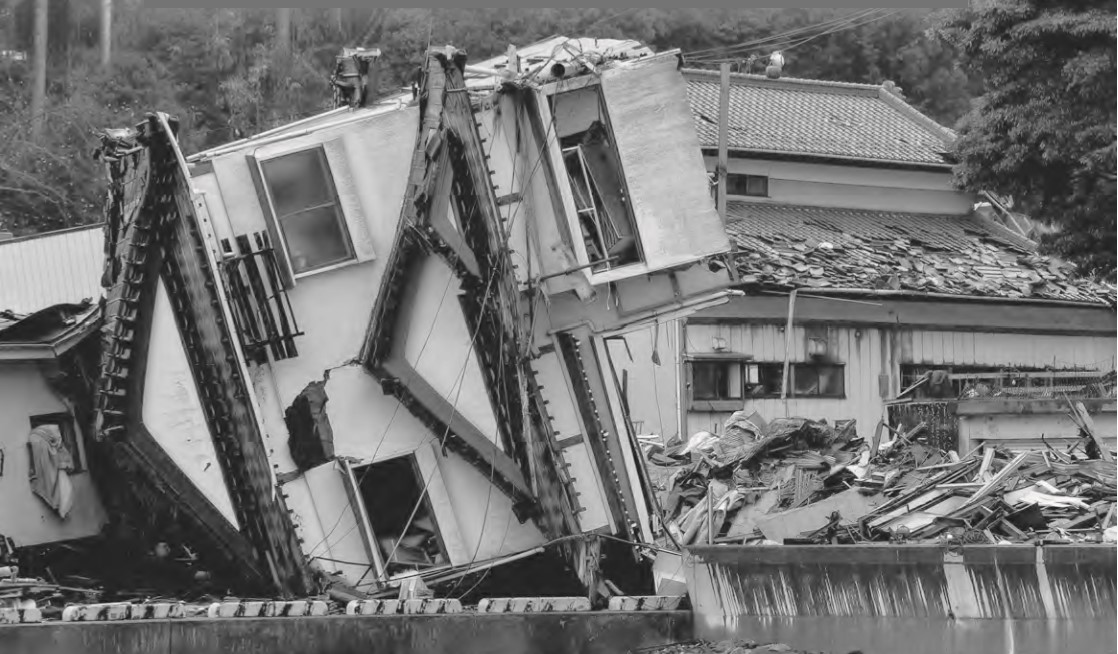
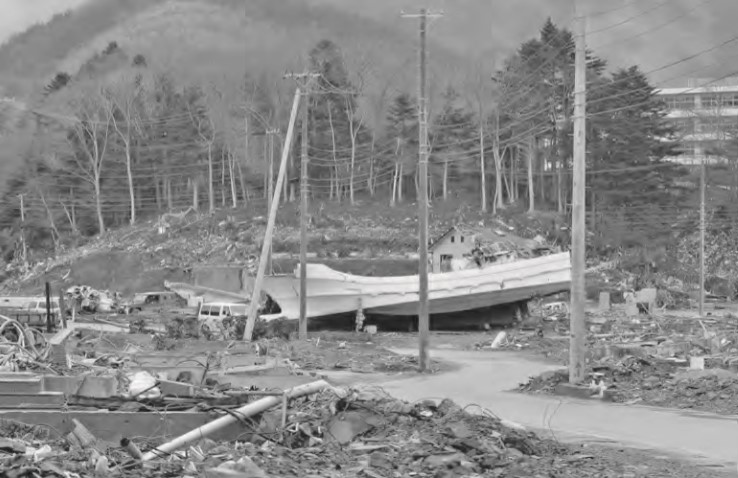
The majority of these literary texts try to provide a way to represent collective trauma. These are pieces that attempt the most challenging task of channeling the individual and collective feeling of pain and loss experienced in the wake of the disaster. Catastrophes are disruptive traumatic events for both the individuals that suffer them and for communities at large. A traumatic event involves unusual levels of pain and loss that cannot be described or justified with reason and logic. Because of that, traumas break the normal process of remembering an event. There is no “before” or “after” a traumatic episode: time becomes arrested at the moment of shock. This effect promotes a feeling of haunting grief that enhances confusion. The lack of closure moves people to endlessly push for answers and explanations that do not come easy, if at all.2
Novelist Furukawa Hideo, who is from Tōhoku, wrote in the days that followed the disaster the short story “Horses, Horses, Despite Everything the Light Is Still Pure.” Instead of taking cover in shelters or moving outside the evacuation zone, Furukawa and a fellow crew decided to go against the tide of refugees and recorded their journey through the devastated area. His initial observations are surprisingly positive. Furukawa finds the province in better conditions than he imagined, with stores that have goods on the shelves and things for sale. The mood changes little by little. After spending some days in the region, this initially upbeat feeling gets overrun by the overwhelming presence of loss. Unable to cope, he walks up to the seaside, and standing there, he observes the “calm Pacific.” The story takes at this point an unexpected turn. One of his characters from The Holy Family, an epic saga he had written describing the hardships of everyday life in this region, appears by his side, crossing the boundaries between fiction and reality. This fictional character shares then with his author a childhood memory: the day when his little sister talked again after years of mysterious voluntary silence. Furukawa’s character explains to his bewildered author that this event allowed the family to “be born again.”
Furukawa wraps up his story with the narrator learning from a news broadcast that his old school is going to be torn apart by bulldozers to remove the radiated soil. The locations of his past are about to disappear, but instead of feeling downcast, Furukawa seems to suggest that this circumstance opens up new possibilities. With his mixing of fiction and reality, Furukawa incorporates the disaster to the cultural memory of the region, transforming it into an event that Japanese people should not forget. There is a clear parallelism between what the little sister represents and the newly revitalized Tōhoku grassroots movement, eager to use this chance to point out the structural issues of the region that go beyond the strike of the disaster. Furukawa opts to promote his new voice awakened after the hardships: the “being born again” of the family in the story.3
When reason falls short in providing peace to the wounded, art opens a window for self-expression. Creativity allows the liberty to approach the traumatic event because it is free from the pressure of having to propose realistic solutions or having to stick with strictly accurate accounts of the incident. Artistic manifestations allow the members of a community to engage emotionally with the trauma. They can promote the discussion of complex topics and problems in a way that is easier to swallow.
Pebbles of Poetry (excerpt)
By Wagō Ryōchi
01
The earthquake hit. I went to the emergency evacuation area, but things calmed down, so I returned to go to work. Thanks everyone for worrying about me. Your words of encouragement are greatly appreciated.
Today is the sixth day since the disaster. My ways of looking at and thinking about things have changed.
Everywhere I end up, there is nothing but tears. I want to write about this, writing with all the power of an Asura.
Radiation is falling. It is a quiet night.
What meaning could there be in harming us to this extent?
The meaning of all things is probably determined after the fact. If so, then what is the meaning of that period “after the fact”? Is there any meaning there at all?
What is this earthquake trying to teach us? If there is nothing it is trying to teach us, then what can we possibly have left to believe?
Radiation is falling. It is a quiet, quiet night.
Source: https://wago2828.com/translation/3582.html. Note: An asura is a term for a deity in Buddhism.
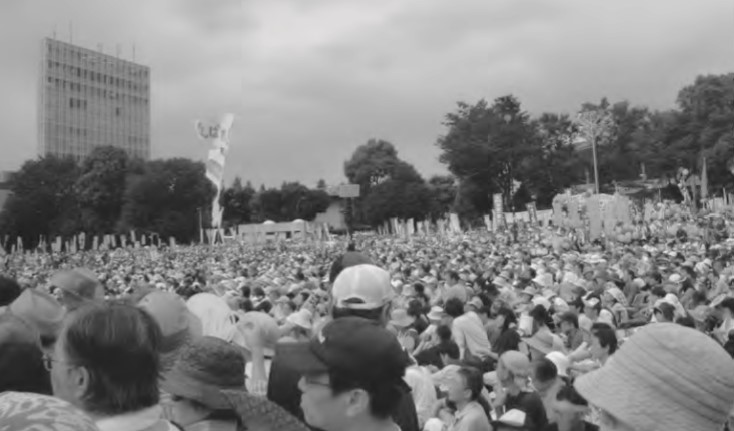
Another Fukushima resident, Wagō Ryōchi, documented on his Twitter feed his thoughts and experiences using a poetic voice during the first days following the events. He quickly gained thousands of followers and later published his text with the title Pebbles of Poetry. 3/11 literature is one of the first representative examples of the fusion of new media and art about trauma. Reading Wagō’s verses is a journey through some of the stages of grief: bewilderment, denial, anger, sadness, and, sometimes, hope. He mixes descriptions of refugee life with his struggles to find meaning for it all.
Many of the literary works that emerged after the 3/11 events have associated themes of material reconstruction with spiritual and community restoration. The population was so shocked by the devastation that solidarity and empathy became essential concepts in articulating the response. International and domestic NGOs started collecting funds aimed at the tasks of recovery and rebuilding. These campaigns included cleaning the debris, rescuing or finding missing people, counseling the family members of victims, or giving shelter to refugees from the affected areas. In 3/11 literature, the damaged regions appear as characters with a peacefully nostalgic past that have become haunted by the wounds and damage inflicted by these events. Literature mixes up the idea of the country as a community with the representation of the affected areas.
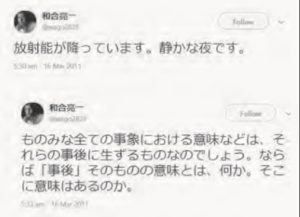
Kawakami Hiromi wrote in 1993 a short story called “Kamisama.” It is the tale of a very polite and old-fashioned bear that moves into an apartment next door to the narrator. Despite original suspicions, the two befriend each other and have a beautiful day out at the lake. The protagonist’s happiness at having met this bear is a bittersweet denunciation of contemporary loneliness in Japan. On the wake of Fukushima, Kawakami decided to rewrite this story. She expands in “Kamisama 2011” the challenges and consequences of isolation for both individuals and regions, this time focusing on those affected by the catastrophe. She reflects on the indirect but decisive ways in which time and tragedies transform everyday life.4
Her story subtly addresses the fragile relationship between humans and nature. In this new version of the story, plot, characters, and even language are identical to the original text. The changes are only small but crucial details. For instance, in “Kamisama 2011,” the protagonists need to wear protective clothing to do their excursion. The text does not explain the reasons for this requirement, but Kawakami assumes the reader will connect these circumstances to what the narrator calls “that event.” Kawakami suggests that the incident has disrupted everyday life habits and practices forever. The writer elucidates with these two versions of the same tale how trauma creates cracks in the surface of daily life that enhance inherent social issues.5
The reaction to 3/11 also included a revitalization of social movements. The following months showed a population mobilized into massive public demonstrations. Many Japanese wondered to what extent the tragedy could have been minimized or even directly averted. The public debate revolved around questions of whether the government was acknowledging its share of the blame. Were the tsunami prevention walls along the coast tall enough? Had they been checked with the necessary periodicity? Was the emergency protocol followed and executed successfully? The institutional handling of the crisis at the Fukushima Daiichi nuclear plant also raised suspicions. Public trust waned after officials tried to diminish the gravity of the accident. They failed to issue safety warnings on time, attempted to conceal major damage in the facilities, and lessened the environmental cost of the spills. Not all these reactions were targeted at state or private institutions, though. The response also opened the floor for an honest and sincere meditation on the ways Japan and the Japanese have been dealing historically with the traumatic shock left by catastrophes. There was a call for taking better care of the survivors and the memory of the dead. Japanese were urged to learn from past mistakes.
The literary community also became vocal in the public debate on how Japan should collectively react and proceed after the disaster. Famous authors such as Ōe Kenzaburō and Murakami Haruki made public declarations condemning the way the government managed the disaster while calling for responsibility and empathy toward the victims.6 These writers interpret that Japan is at a crossroads after the disaster and have pushed for a more thorough and honest assessment of its challenges. Some of these questions echo long-running public demands made by activists, like revisiting the country’s nuclear energy policies. Other concerns addressed by literature are, however, more veiled and indirect.
Tawada Yōko depicts in her story “The Island of Eternal Life” a dystopian habitat set in 2017 in which Japan has become excommunicated from the rest of the world due to the fear of nuclear contamination. The narrator, a Japanese immigrant who has been living in Germany since before the 3/11 disaster, tells us how after Japanese authorities ignored the real dimension of the Fukushima incident, social unrest escalated. A private business conglomerate replaced the democratic government. A second earthquake hit an unprepared Japan and brought about new nuclear contamination. The country is then sealed off from the rest of the world. With a new jump in time, Tawada narrates how the radiation experienced in the following decades affected mainly the young but had no consequence on the elderly—in fact, the fallout makes them live longer, hence the title of the story. Tawada uses the 3/11 disaster to discuss relevant and historical fears and taboos known by some Japanese readers: perceived threats of neoliberalism, international isolation, and the impending doom of an aging society.7
Mass media and government officials promoted a drive of acritical public solidarity. The concepts of kizuna (emotional bonds between people) and gaman (endurance and perseverance) have been used to describe in public discourse the assumed historical position of Japan when facing adversities. This sense of social cohesion and collective spirit can encourage efforts of assistance. It can also help victims bear and cope with pain by making them feel it as a shared burden. However, if this “collective solidarity” appears as something inherently Japanese, it can, at the same time, reinforce stereotypes of national identity. These terms incur the risk of perpetuating the myth of Japan as a country of hive-minded people prone to individual sacrifice.8 They also help exonerate authorities from their due responsibilities.
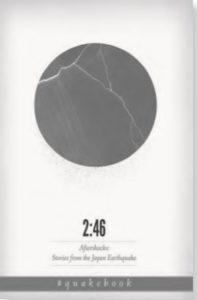 Some authors have attempted to offer an optimistic message in favor of the spirit of kizuna and gaman espoused by official discourses. “Little Eucalyptus Leaves” is a short piece written by Murakami Ryū in the classic fashion of a Japanese essay. The author combines personal experience with historical facts, political declarations, cultural elements, and philosophical reasoning. He uses an anecdote—his eucalyptus tree being uprooted by a typhoon in August 2011—as a metaphor to reflect on the process of recovery after 3/11. Murakami articulates his story around the concept of “hope.” In his view, “hope” is the only thing that the Japanese people gained from the disaster. After losing all their material goods, brought by a period of unbounded economic prosperity, the Japanese could rely on their sense of community. “Hope” needs the Japanese people to care for it, to desire it, and to ensure that it grows stronger with time. He weaves these thoughts using his eucalyptus as a metaphor. After disposing of the dead tree, Murakami keeps ten twigs and plants them in small pots so the tree can grow again, multiplied this time. As he says, “I think that maybe hope is like one of those little eucalyptus leaves. You suddenly become aware of its existence and potential; you gather information and knowledge and, if necessary, capital; and then you take action.”9
Some authors have attempted to offer an optimistic message in favor of the spirit of kizuna and gaman espoused by official discourses. “Little Eucalyptus Leaves” is a short piece written by Murakami Ryū in the classic fashion of a Japanese essay. The author combines personal experience with historical facts, political declarations, cultural elements, and philosophical reasoning. He uses an anecdote—his eucalyptus tree being uprooted by a typhoon in August 2011—as a metaphor to reflect on the process of recovery after 3/11. Murakami articulates his story around the concept of “hope.” In his view, “hope” is the only thing that the Japanese people gained from the disaster. After losing all their material goods, brought by a period of unbounded economic prosperity, the Japanese could rely on their sense of community. “Hope” needs the Japanese people to care for it, to desire it, and to ensure that it grows stronger with time. He weaves these thoughts using his eucalyptus as a metaphor. After disposing of the dead tree, Murakami keeps ten twigs and plants them in small pots so the tree can grow again, multiplied this time. As he says, “I think that maybe hope is like one of those little eucalyptus leaves. You suddenly become aware of its existence and potential; you gather information and knowledge and, if necessary, capital; and then you take action.”9
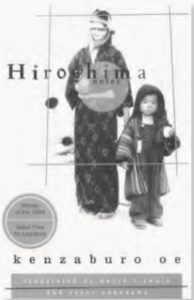 The abundant production of literary material and commentary on 3/11 can help us approach the event and its aftermath from many different angles. The selections offered in this piece are but a token of the variety of literary reactions engaged with the catastrophe. Pebbles of Poetry is, for instance, not the only example of a literary text that germinated in social networks. Another key feature of 3/11 literature is its pioneering relationship with twenty-first-century mass media channels. Just a few days after the earthquake, a group of Twitter users asked people to turn in any creative work that was associated with the events and share it on the platform. The call went viral, and the collective decided to gather these materials and publish them as a volume. 2:46 Aftershocks: Stories from the Japan Earthquake is a book that contains thoughts, anecdotes, illustrations, and microstories from famous and anonymous artists, Japanese or not, far from and close to Fukushima.10 All the earnings made by selling this book were donated to taking care of the victims and the rebuilding efforts. It is a very light, easily approachable reading that can be useful also as material to reflect on the development of contemporary collective artistic initiatives through social media.
The abundant production of literary material and commentary on 3/11 can help us approach the event and its aftermath from many different angles. The selections offered in this piece are but a token of the variety of literary reactions engaged with the catastrophe. Pebbles of Poetry is, for instance, not the only example of a literary text that germinated in social networks. Another key feature of 3/11 literature is its pioneering relationship with twenty-first-century mass media channels. Just a few days after the earthquake, a group of Twitter users asked people to turn in any creative work that was associated with the events and share it on the platform. The call went viral, and the collective decided to gather these materials and publish them as a volume. 2:46 Aftershocks: Stories from the Japan Earthquake is a book that contains thoughts, anecdotes, illustrations, and microstories from famous and anonymous artists, Japanese or not, far from and close to Fukushima.10 All the earnings made by selling this book were donated to taking care of the victims and the rebuilding efforts. It is a very light, easily approachable reading that can be useful also as material to reflect on the development of contemporary collective artistic initiatives through social media.
Readers who want a deeper insight can also refer to the Asia–Pacific Journal’s commendable task of archiving materials, both in English and in Japanese, regard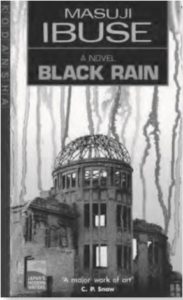 ing the 3/11 events.11 They have included and organized articles, blogs, and different sources that cover many aspects of the disaster and which can help in building up a complete scenario of the catastrophe. For instance, Ami Takako’s article “Disaster Poetry in Ōfunato” deals with an unjustly overlooked matter in disaster literature: works written in vernacular languages or dialects, less accessible for the general public but at the same time more grounded in the community that produces them.12 In addition, readers can refer to the larger history of Japan’s relationship with other episodes of collective trauma. By affinity with the 3/11 events, Ōe Kenzaburō’s Hiroshima Notes and Ibuse Masuji’s Black Rain are two powerful texts that address how the Japanese dealt with the aftermath of the atomic bombs. These works show the terrible consequences of ostracism suffered by their victims. They demonstrate why many voices were worried after 3/11 that Japan would repeat the same mistakes.
ing the 3/11 events.11 They have included and organized articles, blogs, and different sources that cover many aspects of the disaster and which can help in building up a complete scenario of the catastrophe. For instance, Ami Takako’s article “Disaster Poetry in Ōfunato” deals with an unjustly overlooked matter in disaster literature: works written in vernacular languages or dialects, less accessible for the general public but at the same time more grounded in the community that produces them.12 In addition, readers can refer to the larger history of Japan’s relationship with other episodes of collective trauma. By affinity with the 3/11 events, Ōe Kenzaburō’s Hiroshima Notes and Ibuse Masuji’s Black Rain are two powerful texts that address how the Japanese dealt with the aftermath of the atomic bombs. These works show the terrible consequences of ostracism suffered by their victims. They demonstrate why many voices were worried after 3/11 that Japan would repeat the same mistakes.
The earthquake, tsunami, and nuclear catastrophes have become a steppingstone for twenty-first-century Japan. 3/11 literature exposes a community at a potential turning point. It shows a country many believe needs to reflect on and learn from previous errors and take good care of the present. Literature scholar Kimura Saeko writes about how the disaster has engendered a new wave of writers united by a sense of loss and at the same time a desire to connect across many sensibilities within the Japanese society.13 The promise of rebuilding is always a chance for a better future, but recovery needs to be aware of its limitations, honest with its shortcomings, and hopeful with its goals. Literature may serve in this purpose the roles of witness, mediator, judge, architect, and vessel for the pain and loss so that it is confined but never forgotten.

